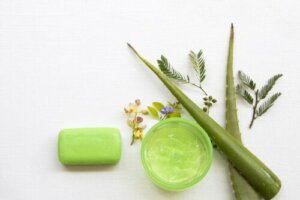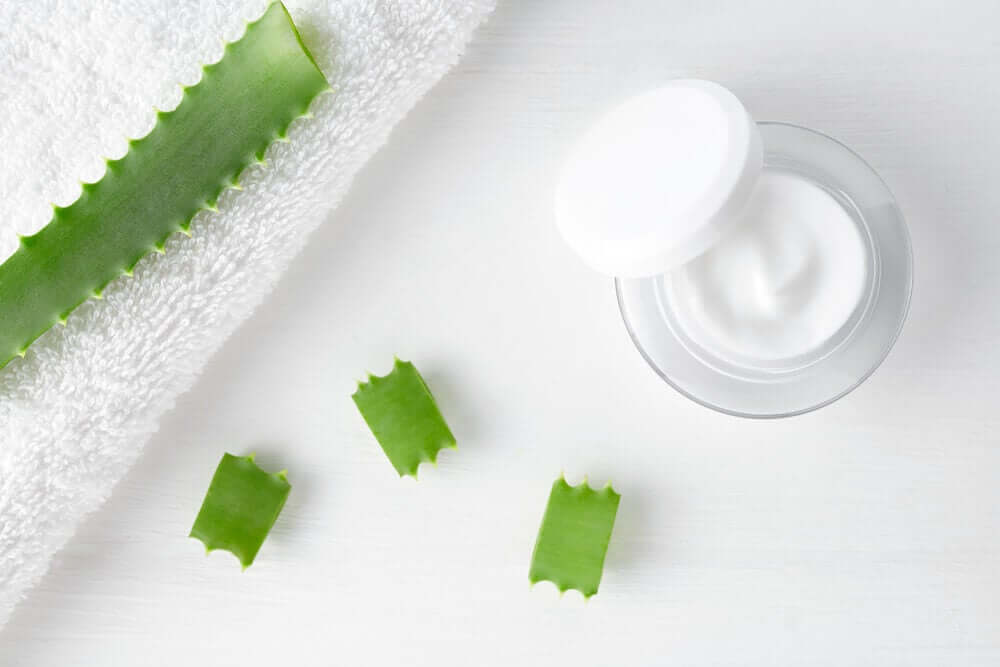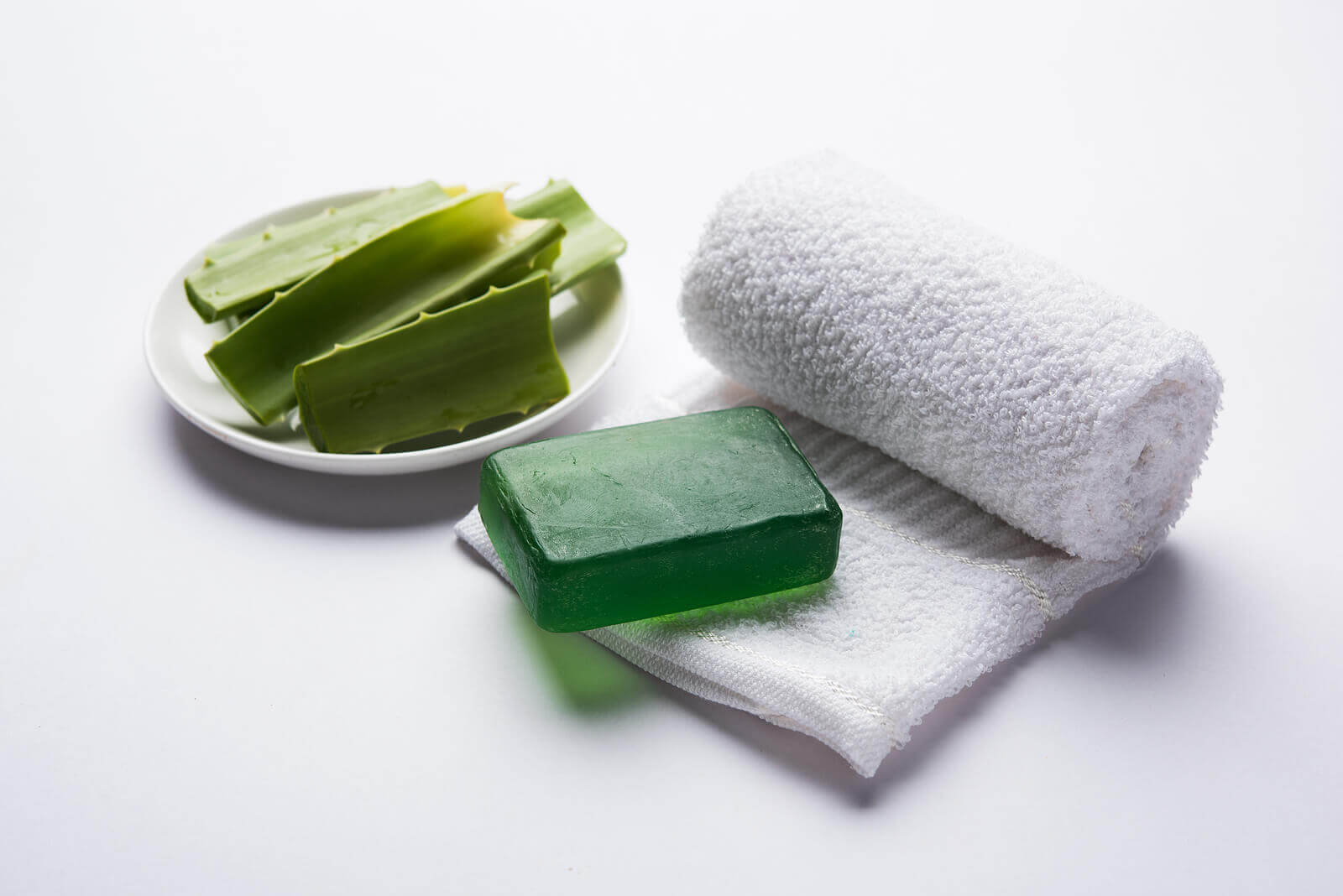How to Make Moisturizing Aloe Vera Soap

Some people find that using commercially made soaps can dry out or irritate their skin.For this reason, you may want to prepare at homemade olive oil and aloe vera soap. These two ingredients help care for the health of the skin and beautify its appearance. Has that also happened to you? In that case, keep reading what we’re going to tell you below.
Maintaining your skin’s own hydration while cleansing it of impurities and accumulated dirt isn’t always easy when you don’t know which products are best for you. This is why it’s important to consult your dermatologist to find out what’s best for you and why.
If the professional authorizes it, you can complement your skin care routine with the soap we’re going to share with you below, which you can also use for both your face and body. Take note of the recipe!
What can aloe vera do for you?

Aloe helps maintain the skin’s natural moisture without making it too oily, so it’s ideal for caring for combination and oily skin types, as well as dealing with those problems of acne.
For this reason, many people already have an aloe plant growing in their garden or patio because it doesn’t require a lot of care and provides a quick and effective remedy for burns, wounds, and more.
The advantages of homemade aloe vera soap
More and more people are making their own hygiene and cosmetic products at home because they get to choose and customize the ingredients that go into them. They’re also able to try different combinations or mixtures to see what’s most suitable for their skin types.
In the case of aloe vera soap, one of the main advantages is that we can give it different nuances with some essential oils, flowers, coconut oil, beeswax, and other natural elements, easy to find in herbalists and health food stores.
How do you make the aloe vera soap?

Ingredients
- 1 cup of olive oil or coconut oil (220 g)
- 3 tablespoons of sodium hydroxide (30 g)
- 6 1/2 tablespoons of distilled water (65 ml)
- 3 tablespoons of aloe vera gel (fresh or bottled) (45 g)
- 15 drops of essential oil of choice(optional)
We recommend you read: Home remedies with olive oil
Equipment
- A mold for soap, or the base of a plastic bottle
- Eye protection when handling the sodium hydroxide
- A hand mixer
- A saucepan
- A glass container
- A wooden spoon
Procedure
- First, put on the safety glasses and carefully set the glass container in the sink.
- Add the sodium hydroxide and then the distilled water. Try to avoid any splashing.
- Next, vapors will be produced and you should leave the mixture to cool.
- Be sure to ventilate the room you’re working in.
- Now add the olive oil and coconut oil to a saucepan over low heat. When it reaches about 115 ° F or 46° C (fairly hot), remove it from the heat and combine the mixture and the water with a hand mixer.
- Start with low speed to avoid splashing, and gradually beat it until it has the consistency of a gel.
- Without waiting for it to cool, add the aloe vera and essential oils, and mix well.
- Pour this mixture into the mold and cover it with a towel to keep the heat in.
- Let it stand until cool, between 12 and 24 hours.
- Once it is cool, you can remove your soap from the mold.
- Finally, store it in a cool, dry place to harden and mature, usually between a month and two and a half months’ time.
Precautions to keep in mind
- Handle sodium hydroxide very carefully.
- Be sure to keep children and pets away from your working area.
- Always use eye and hand protection because it’s a very corrosive material.
- If any of it gets onto your skin, immediately apply some vinegar to the area.
Glycerin soap with aloe
An easier option for making soap with aloe vera is to buy a bar of glycerin soap, warm it using a double boiler, and mix in the aloe vera gel. Then you can pour this mixture into your mold and you’ll soon have a bar of glycerin aloe vera soap.
Using aloe vera soap (made with glycerin or not) can be a good strategy to take care of your skin and keep it in good condition. So, how about giving it a try?
All cited sources were thoroughly reviewed by our team to ensure their quality, reliability, currency, and validity. The bibliography of this article was considered reliable and of academic or scientific accuracy.
-
Surjushe, A., Vasani, R., & Saple, D. (2008). Aloe vera: A short review. Indian Journal of Dermatology. https://doi.org/10.4103/0019-5154.44785.</p>
-
Reynolds, T., & Dweck, A. C. (1999). Aloe vera leaf gel: A review update. Journal of Ethnopharmacology. https://doi.org/10.1016/S0378-8741(99)00085-9.
-
Sciences, L. (2007). Aloe vera. Reactions Weekly. https://doi.org/10.2165/00128415-200711480-00025.</p>
This text is provided for informational purposes only and does not replace consultation with a professional. If in doubt, consult your specialist.








